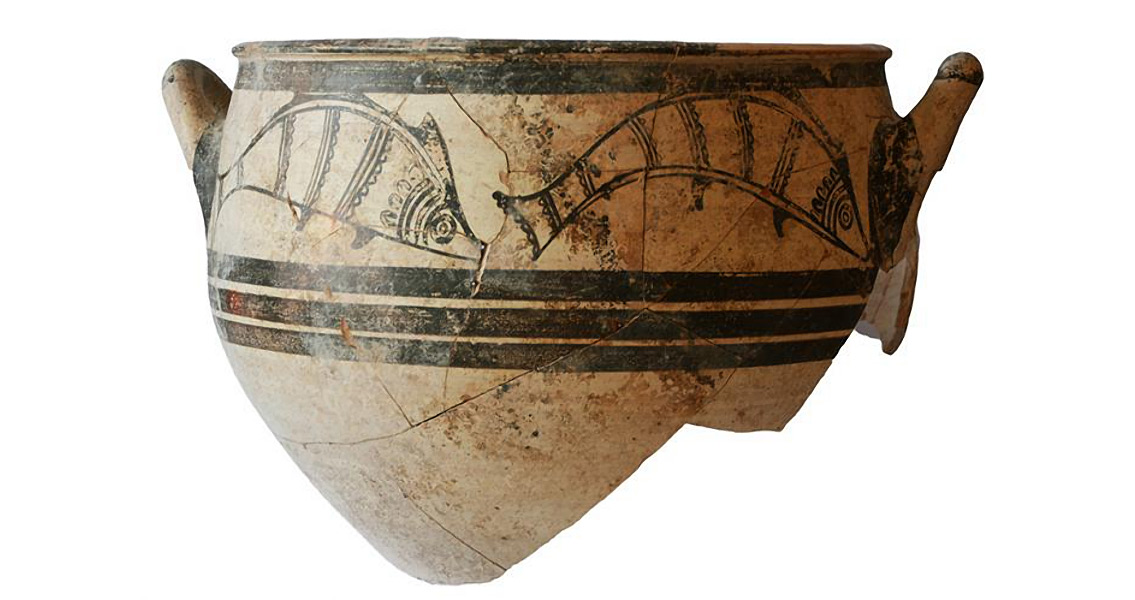<![CDATA[The sensational contents of a more than 3,000 year old grave on Cyprus have confirmed the island was a key location in long distance trade during the Bronze Age. Mycenaean vessels and elaborate gold objects such as a diadem, pearls, earrings and Egyptian Scarabs have all been found in the grave and its offering pit, located close to the Bronze Age city of Hala Sultan Tekke. Covering roughly fifty hectares, Hala Sultan Tekke was a city from 1600 BCE to 1150 BCE. The items found in the grave show Hala Sultan Tekke had diverse, long distance trade connections not just with adjacent cultures but stretching as far as Sweden. Peter Fischer, professor of Cypriot Archaeology from the University of Gothenburg, has been leading excavations by the Swedish Cyprus expeditions since 2010. The latest findings however, could be the most significant. "The excavations in May and June this year were the most successful to date. We discovered an older city quarter from around 1250 BC and outside the city we found an incredibly rich grave, one of the richest in Cyprus from this period, and an offering pit next to it." said Prof Fischer. "The fact that we have discovered a burial site from the Late Bronze Age is quite sensational, since those who died around this time were usually buried within the settlement". Prior to the excavation, a geophysical survey was carried out using radar equipment capable of identifying what is under the ground to a depth of up to two metres. Almost a hundred ground pits were revealed by the survey: some of these turned out to just be wells, but the remarkable grave was also detected. Fischer explained: "Wells are usually one metre in diameter, but this structure was 4 x 3 metres. The grave seems to be a family tomb for eight children ages 5-10 years and nine adults, of whom the oldest was about 40 years old. The life expectancy was much shorter back then than it is today." Along with the gold objects, finds from the grave and offering pit also include gemstones and five cylinder seals, some of which were produced in Syria and Mesopotamia. For the archaeologists however, the more than 140 ceramic vessels unearthed at the site are the most useful find, each one telling its own unique story. The majority of the vessels were elaborately decorated, with anything from images of people in chariots, to animals and religious symbols. Most of the vessels were imported from Greece or Crete, although some came from Anatolia (present day Turkey). "The pottery carries a lot of archaeological information. There were for example high-class Mycenaean imports, meaning pottery from Greece, dated to 1500-1300 BC." said Fischer. "The motif of the woman, possibly a goddess, is Minoan, which means it is from Crete, but the vase was manufactured in Greece. Back in those days, Crete was becoming a Greek "'colony'". Remarkably, the archaeologists have been able to connect one of the 3,500 year old Egyptian scarabs to an historic individual. An inscription on the scarab, next to an image of a pharaoh, refers to Thutmose III, who ruled Ancient Egypt at the peak of its influence and oversaw the colonisation of Syria and Mesopotamia. "We also found evidence in the city of large-scale manufacturing and purple-dying of textiles. These products were used in the trade with the high cultures in Egypt, Anatolia, the Levant, Mesopotamia, Crete and Greece, which explains the rich imported finds." Bizarrely, the team have still only found the burial site and not any remains of the city itself from the same period. "It must have been a rich city judging from the grave we found this year. But it is most likely located closer to the burial site in an area that still has not been explored", said Fischer. Fischer and his team will resume their excavations at the site in Spring 2017. Image courtesy of Peter Fischer ]]>
Mycenaean and Egyptian Artefacts Discovered in Cyprus Grave
